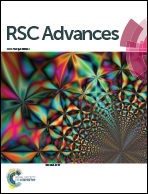Synthesis and characterization of polyurethane/poly(vinylpyridine) composite membranes for desulfurization of gasoline
Abstract
Polyurethane/poly(vinylpyridine) (PU/PVP) composite membranes for desulfurizing gasoline were prepared. The membranes were characterized by scanning electron microscopy to confirm the fine dispersion of PVP in PU, and a swelling test was conducted to determine the suitability of composite membranes for desulfurizing gasoline. The hydrophilicity of the membranes was analyzed by measuring the contact angle. The hydrophilicity of mixed matrix membranes was much higher than the pure PU membranes. The performance of the membranes was evaluated in pervaporation desulfurization of gasoline under different operating conditions. The effect on the pervaporation performance of the composite membranes of operational parameters, including feed flow rate, sulfur concentration in the feed stream, and feed temperature, were studied. The permeation flux increased with the feed flow rate and operating temperature, whereas it remained almost constant as the sulfur content in the feed increased. However, the sulfur enrichment factor decreased with increasing sulfur content in the feed stream. In addition, a mathematical model was developed to simulate the pervaporation system. The model was based on solving the continuity equation for sulfur in the feed side and membrane.


 Please wait while we load your content...
Please wait while we load your content...